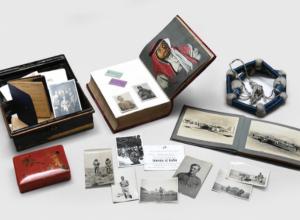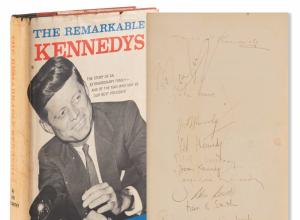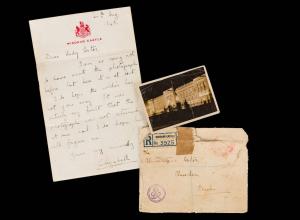Wilson Centre for Photography Deposits Collection of Early Photographs at the Bodleian Libraries

An Inuit woman with her child, portrait by Beverly Bennett Dobbs
Rare salt prints from the dawn of photography made by some of the earliest photographic practitioners are among the Bodleian deposit consisting of more than 1,000 items from the 19th and early 20th centuries made by The Wilson Centre for Photography in London.
The outstanding collection of photographic albums and photographically illustrated books includes travel photography from across the globe, photographs held in Victorian scrapbooks and family albums, together with early outstanding examples of photographically illustrated books.
The Bodleian's Bern and Ronny Schwartz Curator of Photography, Dr Phillip Roberts said that the deposit represents a major resource for researchers and scholars across a wide range of topics, including early photographic history, global history, anthropology, travel and climatology.
One of the remarkable characteristics of the collection is the presence of a large number of salt prints, such as those in an album made by early photographer Fallon Horne portraying his family, friends and home. Salt prints are one of the very earliest photographic processes and incredibly fragile and rare. The Fallon Horne album will contribute a further 100 salt prints to the Bodleian’s existing holdings, expanding the collection considerably.
Another highlight is a key document of early photography known as the 'Hamilton Gray album' named after the Scottish cleric John Hamilton Gray, but now thought to have been assembled by his wife or daughter whose names are not currently known. The Gray album is an important testimony of a time during which photography was gaining popularity in Scotland, a handmade scrapbook containing an eclectic mix of photographs, clippings, sketches and coloured-in images, including previously unknown prints by the important early photographic pioneers David Octavius Hill and Robert Adamson.
The collection also features a book of photography by Hugh Owen, a Bristolian photographer who broke Henry Fox Talbot’s patent to develop a career in commercial photography. In 1851, Owen was one of several photographers to capture the Great Exhibition, tasked with taking photographs of the winning entries to the exhibition for posterity. However, he was taken with many objects in the exhibition and ended up prioritising photography of the exhibits he liked the look of rather than just the winning ones. As a result, many of the photographs contained in this book have never been published, providing a new perspective on the Great Exhibition.
The deposit contains several remarkable examples of early travel photography and British photographic literature. In the 19th century, it was in fashion among European photographers to travel around the world and capture images of curiosities and landmarks on-site with their cameras. These were later developed and then pasted into large-scale books to feed people’s curiosity, as for many photography was the only way to see what was beyond the borders of Europe, or even the British Isles.
The Wilson Collection is rich with such examples, including a rare copy of the large format book Views of Greece and Egypt (1862) by CG Fountaine, an elephant folio album featuring 36 photographic views of Egypt and Greece, two countries that were very popular in the public imagination at the time. The book includes views of ancient ruins and several examples of archaeological sites pre-excavation, the most remarkable of which is a photo of the Sphinx still half buried in the sand.
Other examples of early travel photography in the archive include a series of photos by Samuel Bourne, an English photographer who had studios across British India, prints by Francis Bedford and John Edward Saché, and photographs from across Europe, Africa, the Middle East, Asia, and the Pacific. The collection includes some of the earliest photographic views of the Egyptian Pyramids, Greek Temples, and the Hajj in Mecca.
Another major section of the collection is dedicated to photographs of areas of the world less well visited by early photographers. Some of the most interesting examples can be found in William Bradford’s Arctic Regions (1873), one of the largest photobooks of the 19th century in which photos of the landscapes and people of Greenland are inserted within the narrative of the travellers’ journey through the region. These images are also a useful record of what the region looked like at the time and could be of particular interest to climate researchers.
Alongside the interest in nature and landscapes, these photos also show an anthropological interest. While the images of Greenlandic Inuit in Arctic Regions as well as the accompanying text paint a rather negative picture of the relationship between Europeans and Inuit heavily tainted by the colonialist gaze, a collection of striking portraits of Indigenous Alaskans shows something quite different. The photos, taken by HG Kaiser and Beverly Bennet Dobbs, who had local studios in Alaska, portrayed the subjects beautifully.
The deposit is currently being catalogued and will be made available to researchers later this year.















